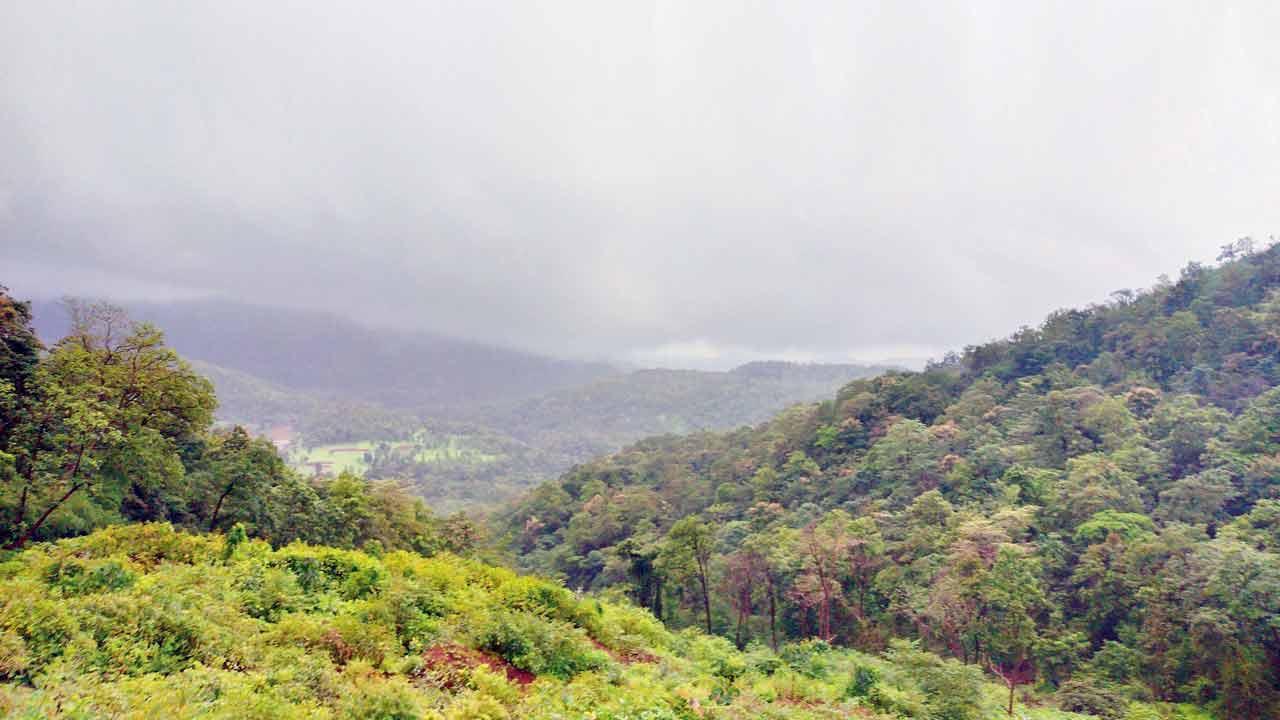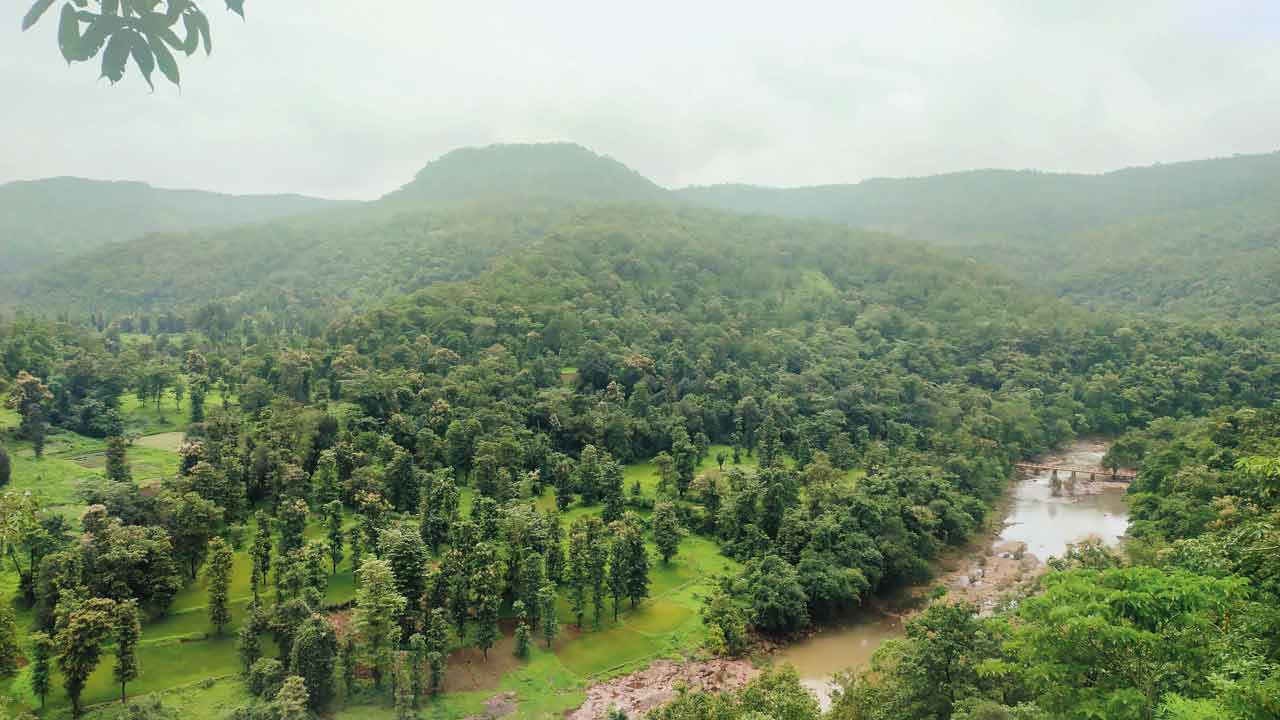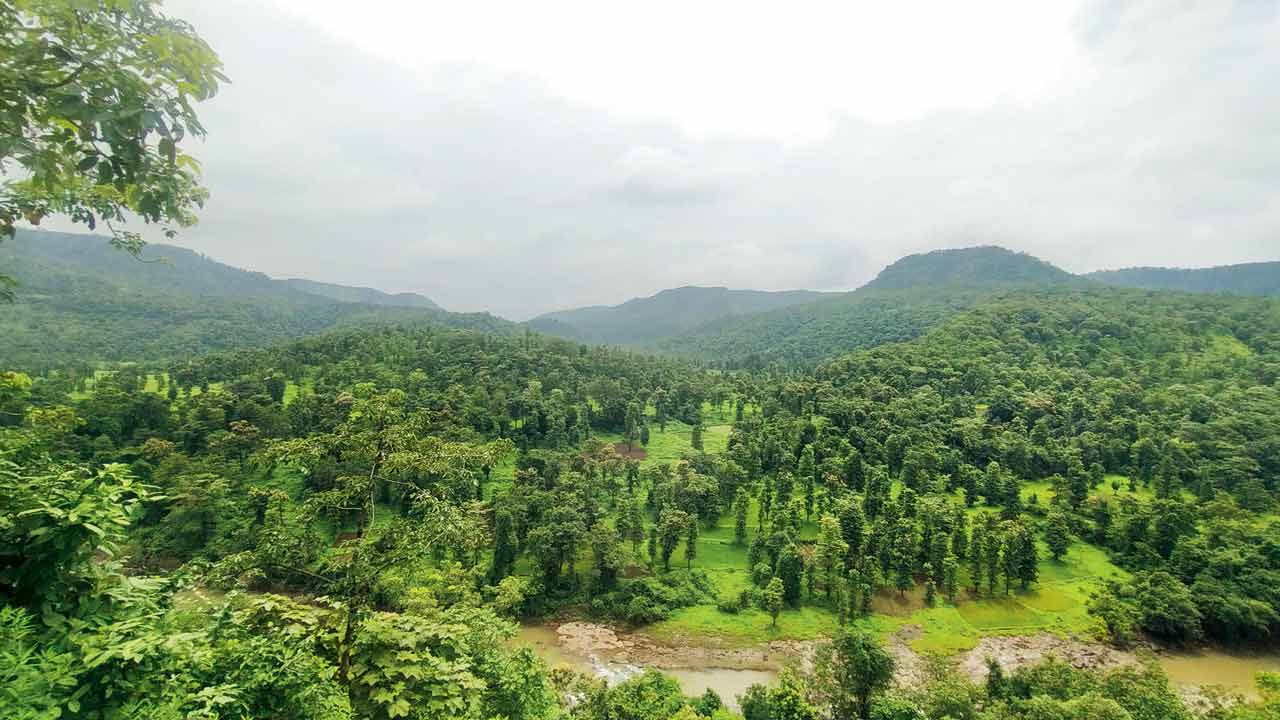With state dusting off shelved controversial project, BNHS puts down strong objection, saying the area connects multiple sanctuaries and any development there will disturb the entire northern part of the Western Ghats

The letter states that Tansa Wildlife Sanctuary is part of Western Ghats, a UNESCO World Heritage Site. Pic/Ranjeet Jadhav
The Bombay Natural History Society (BNHS) wrote a letter to Bhupender Yadav, Union minister of environment, forest and climate change, on July 21 vehemently opposing the Gargai dam project, stating, among other things, that if the structure were constructed, it would restrict the movement of wildlife in the Tansa Wildlife Sanctuary in Palghar district and the northern western ghats. Wildlife experts also feel that it is crucial to leave this vital wildlife corridor untouched.
ADVERTISEMENT
The letter, a copy of which is in mid-day’s possession, states that Modak Sagar and Tansa dams have been built over the Vaitarna and Tansa rivers, which flow through the sanctuary and restrict the free movement of wildlife. Gargai dam will further restrict the movement of wildlife in the sanctuary as well as in the northern western ghats, it reads.
 The Gargai dam project would destroy the habitat of the endangered forest owlet, according to the BNHS and experts. Pics/Ranjeet Jadhav
The Gargai dam project would destroy the habitat of the endangered forest owlet, according to the BNHS and experts. Pics/Ranjeet Jadhav
The letter—sent by Kishor Rithe, the then-interim director of BNHS to the minister for environment, forest and climate change and chairman of the standing committee of the National Board for Wildlife— stated that the society would like to place on record its objection to the proposed project that is to be constructed by submerging almost 839.02 ha of forest spread over Thane and Palghar districts. It also mentions that the sanctuary is a part of the Western Ghats, one of the world’s eight hottest biodiversity hotspots and a UNESCO World Heritage Site.
Research cited
“As per the project report prepared by the Brihanmumbai Municipal Corporation (BMC), around 4OO,0OO trees would be submerged. BNHS had already conducted the study at the proposed site during 2015-16 and documented the grasses, herbs, shrubs, climbers and fungi that provide micro and macro habitats to vertebrate and invertebrate fauna. The proposed area also supports the endangered forest owlet (Afhene Heterogolux Blewittii), which was presumed to be extinct. All these species would be affected due to the proposed project. This project would destroy the habitat of the forest owlet, invaluable forest ecosystem in and around the sanctuary and will have long-lasting negative ecological consequences,” the letter reads. Drawing attention to the area’s biodiversity, the letter mentions that BNHS has included wildlife sanctuary as an important bird area based on 212 species of avians recorded by birders as well as the published checklist of birds.

Rich biodiversity
“BNHS also did an extensive biodiversity assessment of the sanctuary on behalf of the BMC and recorded 140 species of avifauna, including the forest owlet as well as mammals, insects, invertebrates, etc. A survey done by the Zoological Survey of India (ZSl) in 1992 revealed the presence of over 50 species of mammals, including the common leopard, Indian chevrotain, sambar, leopard cat, rusty-spotted cat, Indian porcupine, ruddy mongoose, small Indian civet, striped hyena and Indian pangolin. The ZSI recommended Tansa to be declared as a sanctuary to protect the four-horned antelope, which has a restricted distribution in the Western Ghats. Tigers were sighted here till the 1980s. ln 2011, Habenorio longicorniculoto, an orchid species endemic to India, was recorded at the sanctuary by a team of botanists from St Xavier’s College, Mumbai.” The letter also states a Rapid Biodiversity Assessment undertaken by the Corbett Foundation recorded over 400 species of flora, fauna and fungi in just an eighth-day survey of the areas in the sanctuary.
Wildlife habitat connectivity
Stressing the important aspect of the wildlife habitat connectivity, the letter states that Tansa Wildlife Sanctuary is contiguous with the forest areas of the northern western ghats landscape such as with Kalsubai Harishchandragad Wildlife Sanctuary, Thane Forest Division, Bhimashankar Wildlife Sanctuary, Tungareshwar Wildlife Sanctuary, Sanjay Gandhi National Park (SGNP), and Wada and Jawahar Forest divisions.
“Previous research indicates that Tungareshwar, Kalsubai and Tansa sanctuaries can be connected through corridors having an approximate total length of 154 km and mean width of 11 km on the north-east side and 36.5 km on the east side (Kale et al., 2010).” the letter states. The letter also claims that the dam, which would cause bout three lakh trees at the wildlife sanctuary to be submerged, would have a range of adverse effects.
“Thousands of hectares of biodiversity-rich forest areas have already been submerged to provide water to Mumbai by constructing dams in Tansa Wildlife Sanctuary and its surrounding forest areas, and the SGNP. In this context, it would be advisable to make investments to prevent water leakage and wasteful consumption, establish tertiary sewage treatment plants across the city, reuse treated water for non-drinking purposes, set up desalination plants to meet the needs of drinking water and carry out effective rainwater harvesting to augment the water supply to meet the demands of the city rather than invest thousands of crores in constructing the ecologically devastating dam,” the letter reads. The letter also points out that it is necessary to look at the sanctuary as more than just a “large water storage tank” for Mumbai.
Expert Speak
Wildlife conservationist Kedar Gore of the Corbett Foundation said that the Tansa forest is contiguous with the forested areas of Thane, Palghar and Nashik and also has connectivity with the Kalsubai Harishchandragad Wildlife Sanctuary and the Thane Forest Division. “From here it connects to the Bhimashankar Wildlife Sanctuary, Tungareshwar Wildlife Sanctuary and SGNP, Wada and Jawhar Forest Divisions. It’s not a mere forest! Tansa is a vital catchment for the Vaitarna, Tansa and Gargai rivers, all lifelines for local communities and wildlife. In 1986, two tigers were sighted near Suryamal by local tribals and forest department staff. Recognising the ecological significance of Tansa, an eco-sensitive zone (ESZ) of 625 sq km around the sanctuary, covering 145 villages in Shahapur, Bhiwandi, Mokhada and Wada tehsils, has been notified. If Tansa continues to be as ill-treated as it has been over decades, it will be just a matter of time before this beautiful forest is lost forever. The sanctuary and surrounding forests are crucial for climate moderation, stocking aquifers, keeping viruses in check and sequestering and storing carbon.”
‘Corridors are crucial’
Rohidas Dagale, former member of the Maharashtra State Board for Wildlife, said, “The proposed Gargai dam area is densely forested and serves as a vital wildlife corridor for leopards, jungle cats, endangered rusty-spotted cats, striped hyenas, Indian porcupines and other species. The dam will have a substantial impact on this biodiversity-rich area and hinder wildlife movement in the wildlife sanctuary and the northern western ghats. Wildlife corridors are critical for biodiversity conservation because they provide interconnected channels for animals to travel between fragmented habitats. These corridors promote gene flow, increase population viability and aid species in adapting to environmental changes.”
140
No of avifauna species recorded at site
2011
Year orchid species was recorded at sanctuary
 Subscribe today by clicking the link and stay updated with the latest news!" Click here!
Subscribe today by clicking the link and stay updated with the latest news!" Click here!







